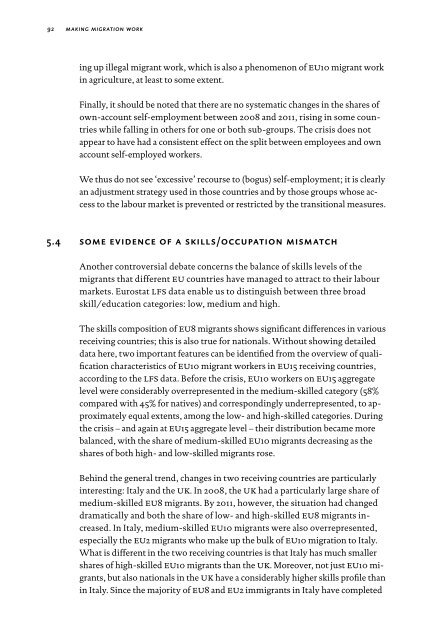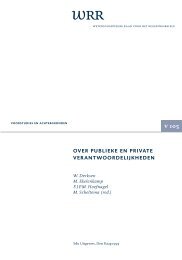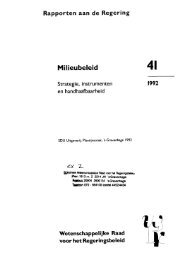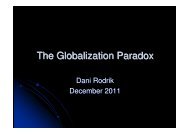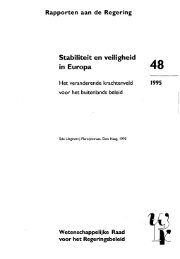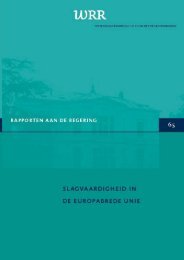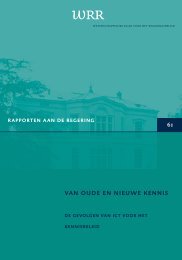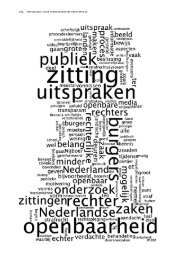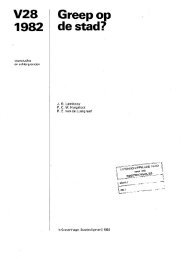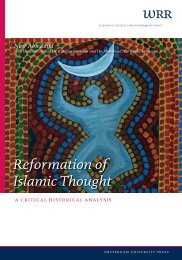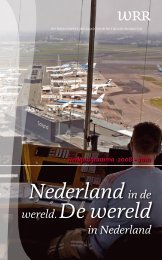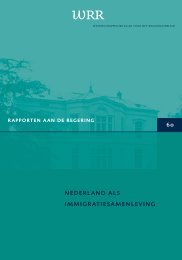Making Migration Work - Wetenschappelijke Raad voor het ...
Making Migration Work - Wetenschappelijke Raad voor het ...
Making Migration Work - Wetenschappelijke Raad voor het ...
- No tags were found...
You also want an ePaper? Increase the reach of your titles
YUMPU automatically turns print PDFs into web optimized ePapers that Google loves.
92making migration working up illegal migrant work, which is also a phenomenon of eu10 migrant workin agriculture, at least to some extent.Finally, it should be noted that there are no systematic changes in the shares ofown-account self-employment between 2008 and 2011, rising in some countrieswhile falling in others for one or both sub-groups. The crisis does notappear to have had a consistent effect on the split between employees and ownaccount self-employed workers.We thus do not see ‘excessive’ recourse to (bogus) self-employment; it is clearlyan adjustment strategy used in those countries and by those groups whose accessto the labour market is prevented or restricted by the transitional measures.5.4 some evidence of a skills/occupation mismatchAnother controversial debate concerns the balance of skills levels of themigrants that different eu countries have managed to attract to their labourmar kets. Eurostat lfs data enable us to distinguish between three broadskill/education categories: low, medium and high.The skills composition of eu8 migrants shows significant differences in variousreceiving countries; this is also true for nationals. Without showing detaileddata here, two important features can be identified from the overview of qualificationcharacteristics of eu10 migrant workers in eu15 receiving countries,according to the lfs data. Before the crisis, eu10 workers on eu15 aggregatelevel were considerably overrepresented in the medium-skilled category (58%compared with 45% for natives) and correspondingly underrepresented, to approximatelyequal extents, among the low- and high-skilled categories. Duringthe crisis – and again at eu15 aggregate level – their distribution became morebalanced, with the share of medium-skilled eu10 migrants decreasing as theshares of both high- and low-skilled migrants rose.Behind the general trend, changes in two receiving countries are particularlyinteresting: Italy and the uk. In 2008, the uk had a particularly large share ofmedium-skilled eu8 migrants. By 2011, however, the situation had changeddramatically and both the share of low- and high-skilled eu8 migrants increased.In Italy, medium-skilled eu10 migrants were also overrepresented,especially the eu2 migrants who make up the bulk of eu10 migration to Italy.What is different in the two receiving countries is that Italy has much smallershares of high-skilled eu10 migrants than the uk. Moreover, not just eu10 migrants,but also nationals in the uk have a considerably higher skills profile thanin Italy. Since the majority of eu8 and eu2 immigrants in Italy have completed


